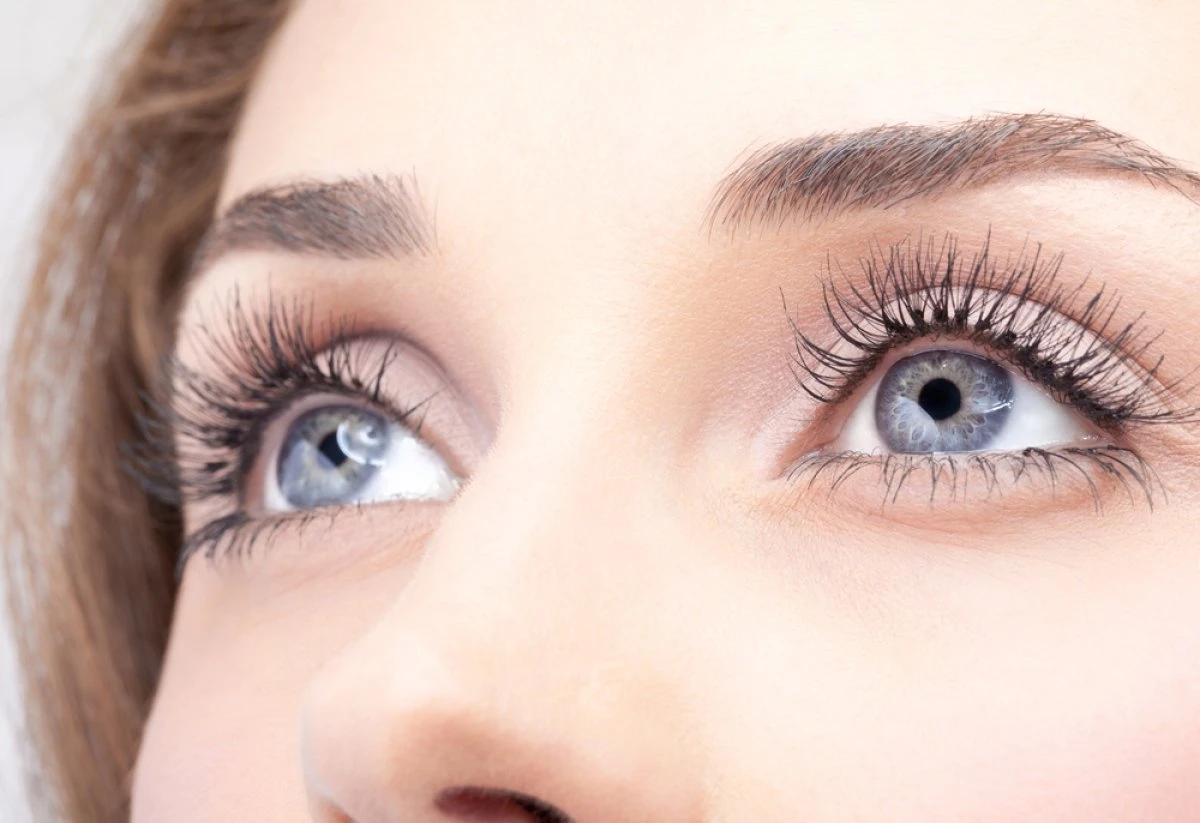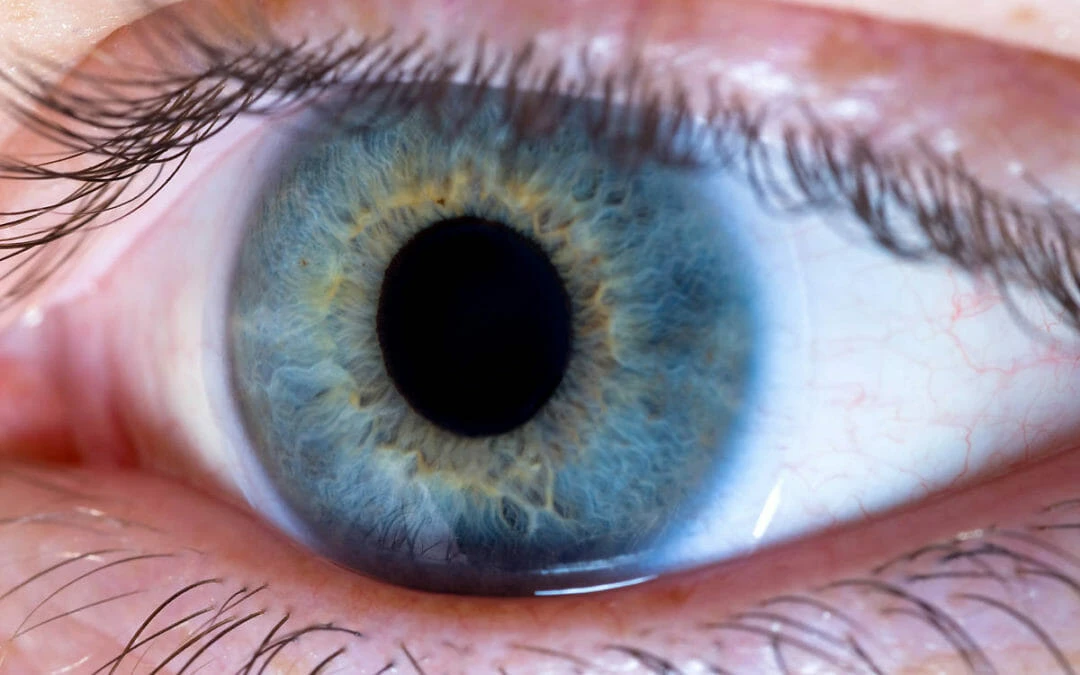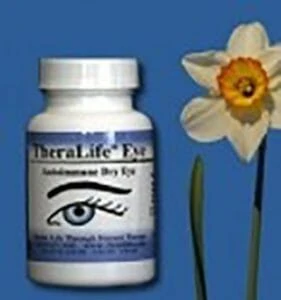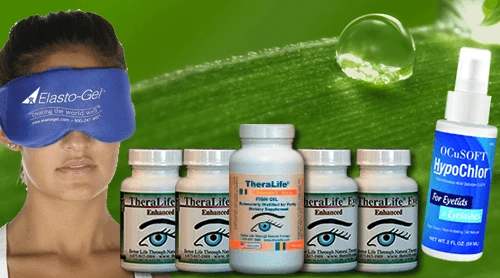All natural treatment for Uveitis – TheraLife
Explore how an oral dry eye treatment option can control and manage Uveitis.
Read more about customer stories.
Definition
Uveitis is a condition that affects the eyes and can cause severe vision impairment if left untreated. Characterized by inflammation of the uveal tract, which includes the iris, ciliary body, and choroid layer in the eye, this condition is often associated with systemic illnesses such as sarcoidosis or multiple sclerosis.
Uveitis is considered an autoimmune disorder.
This article will explore whether achieving a complete cure for Uveitis is possible and discuss strategies to manage it most effectively.
Symptoms are an essential ocular pathology due to its potential impact on visual acuity. In addition to physical signs of ocular inflammation – including decreased light transmittance through the cornea and vitreous haze – patients may also experience discomfort, photophobia, floaters, or blurred vision, similar to dry eye syndrome.
Treatment options vary depending upon disease etiology but typically involve anti-inflammatory agents, immuno-suppressive medications, or biologic agents such as monoclonal antibodies or interleukins. Understanding more about uveitis pathogenesis and treatment efficacy requires further exploration into these therapeutic modalities.
What Is It?
Uveitis is an inflammatory eye disease that can affect the uveal tract, which consists of the iris, ciliary body, and choroid. It is often associated with a systemic illness or autoimmune disorder but may also be idiopathic.
The anatomy of the eye comprises multiple layers, including the sclera, cornea, lens, and retina. The anterior chamber lies between the cornea and lens and contains aqueous humor, while the posterior chamber is deeper within the eye and filled with vitreous humor. Uveitis symptoms include redness, eye pain, and light sensitivity.
In some cases, however, this protective mechanism can become dysregulated, resulting in inflammation that should not usually occur, such as when an autoimmune disorder or an unknown trigger causes it to malfunction. This type of inflammation occurring within the uvea is called Uveitis. Moving forward, we will examine the possible causes of this condition.
Uveitis and Dry Eye Disease
Relationship between Dry Eye Disease (DED) and Uveitis. Research databases for articles where at least one patient had DED and Uveitis concomitantly. The search produced 2381 records, and 24 studies were included in the qualitative synthesis. We concluded that Dry Eye Disease and Uveitis of any etiology could appear concomitantly in patients of any age. However, both diseases coexist more frequently in middle-aged women and cases of anterior Uveitis. Therefore, it is crucial that ophthalmologists actively look for the coexistence of ocular surface abnormalities, especially in patients with these characteristics.
Middle-aged women are the ones with whom the two diseases coexist more frequently – this could represent clinical evidence of the common pathophysiological pathways found between these inflammatory diseases or a coincidence because both disorders are more common in adult women. It is essential that ophthalmologists actively look for the coexistence of DED, both aqueous and lipo deficient, in patients with Uveitis, especially if anterior.
Causes -Autoimmune
1. Uveitis is an inflammatory eye disease, and its causes can range from immune system dysfunction to environmental factors.
2. Development of Uveitis is linked to an imbalance in the immune system, leading to an overactive immune response that damages the eye.
3. Environmental factors, such as exposure to certain chemicals or infection from certain viruses, can also trigger Uveitis.
4. Treatments for Uveitis depend on the cause, and while complete cures are possible, they can be challenging to achieve.
Immune System Dysfunction
Uveitis is a chronic inflammatory condition of the eyes that can cause severe vision problems if left untreated. One of the primary causes of Uveitis is immune system dysfunction, which various factors can cause.
Nutritional therapy and lifestyle changes are two important ways to address this underlying issue to reduce symptoms and improve overall health outcomes. Nutritional therapy involves making dietary modifications based on an individual’s nutrient deficiencies or intolerances – this may include adding specific vitamins and minerals and avoiding certain foods that could aggravate inflammation. Additionally, supplements such as omega-3 fatty acids help alleviate inflammation associated with Uveitis.
Lifestyle changes also play a role in helping manage immune system dysfunction associated with Uveitis. Regular exercise has been linked to improved immunity, while stress reduction techniques such as yoga and meditation can help slow down overactive immune responses. Individuals suffering from chronic inflammation must rest well and establish healthy sleep habits to support their body’s natural healing process.
Many people can achieve long-term remission from their uveitis symptoms with proper treatment.
Environmental Factors
In addition to immune system dysfunction, environmental factors can also play a role in the development of Uveitis. Occupational hazards such as toxic chemicals or radiation exposure increase the risk of developing this condition.
An increased incidence of Uveitis is linked to air pollution, particularly in those with pre-existing conditions such as asthma or allergies. Environmental triggers may vary from person to person and should be discussed with a medical professional when determining an effective treatment plan.
Individuals must take preventative measures to reduce their likelihood of developing Uveitis due to environmental causes – this includes avoiding contact with hazardous materials whenever possible, wearing protective gear if necessary, and limiting time spent outdoors during periods of high air pollution.
Knowing any potential occupational hazards related to one’s job and work environment is also beneficial to take proper precautions.
Adopting healthy lifestyle habits may minimize the effects of environmental toxins on the body and improve overall health outcomes associated with Uveitis. Eating a balanced diet rich in antioxidants can help protect against oxidative damage caused by pollutants, while regular exercise helps maintain a robust immune system.
Additionally, getting adequate rest at night can support natural healing processes within the body and help manage inflammation more effectively.
Symptoms
Uveitis is an inflammation of the uvea, a group of structures in the eye that provide blood flow and nourishment to the retina.
Symptoms can vary from mild to severe depending on the type and severity of the condition but commonly include redness in one or both eyes, pain or discomfort in the eye(s), blurred vision, increased sensitivity to light (photophobia), and floaters.
For treatment to be successful, symptom management, as well as lifestyle changes, should be implemented.
The following strategies may help alleviate symptoms associated with Uveitis:
* Reduce stress levels through relaxation techniques such as yoga, meditation, or deep breathing exercises.
* Increase daily activity levels by engaging in regular exercise such as brisk walking or swimming. * Get plenty of restful sleep by avoiding late-night activities and limiting exposure to blue light from electronic devices before bedtime.
In addition to these treatments, those suffering from Uveitis need to follow their doctor’s instructions regarding medications and other therapies prescribed for controlling symptoms related to this condition.
Individuals can successfully manage their conditions over time with proper diagnosis, symptom management, and lifestyle modifications.
As we advance, we recognize the importance of diagnosing it accurately.
Diagnosis
In the ancient art of medicine, this has been a source of frustration for many practitioners. It is an inflammatory disorder that affects any part of the eye and may cause vision loss if left untreated. Diagnosis of this condition can be challenging due to its various forms. However, specific diagnostic tests may prove helpful in identifying it.
The most common diagnostic test used to diagnose is slit-lamp biomicroscopy which usually involves dilating the pupils and examining them with a microscope. This method allows ophthalmologists to observe signs of inflammation, such as flares or cells in the eye’s anterior chamber.
Additional imaging tests, including ultrasound or optical coherence tomography (OCT), may be required. Ocular trauma should be eliminated when diagnosing Uveitis since both conditions share similar symptoms.
Treatment options must be carefully considered after a proper diagnosis based on factors like severity and underlying causes. The intensity of treatment depends upon the long-term damage from the condition; thus, close monitoring by an experienced medical professional is crucial for successful management.
Treatment Options
Uveitis is a complex and potentially sight-threatening condition requiring an individualized treatment plan.
Medical therapies are typically the most effective option for treating Uveitis and may include corticosteroids, immunosuppressants, or biologics.
Alternative treatments, such as acupuncture, help decrease inflammation and improve symptoms associated with it.
Diet and lifestyle changes, decreasing intake of sugar and processed foods can also be beneficial in reducing inflammation and improving overall health.
Additionally, research suggests regular exercise, stress reduction, and adequate sleep can help reduce inflammation and improve symptom management.
Ultimately, the goal of treatment is to completely control the condition and prevent it from progressing or recurring.
Medical Therapies
Uveitis is a condition that affects the eye and can cause vision loss if not treated properly.
Medical therapies include topical steroids, immunosuppressants, and other medications.
Topical steroids such as prednisolone acetate can be used for short-term treatment of symptoms associated with Uveitis; however, they do not address the underlying inflammation or damage caused by the disease.
Immunosuppressants can reduce inflammation in some cases by adverse side effects such as increased risk of infections.
You must take these drugs long-term, which can lead to complications due to their toxic nature.
Other medications, such as nonsteroidal anti-inflammatory drugs (NSAIDs) and antibiotics, may also be prescribed depending on the type and severity of the patient’s condition.
Despite advances in medical therapy, there is still no complete cure for Uveitis; however, treatments remain effective at managing its symptoms and providing relief from discomfort caused by this chronic disease.
Alternative Treatments
In addition to medical therapies, alternative treatments have also been found to be effective in managing Uveitis.
Mind-body practices such as yoga, meditation, and mindfulness-based stress reduction (MBSR) can help reduce inflammation by improving relaxation and decreasing the physical effects of stress on the body.
Dietary changes may also play a role, with some studies showing that following an anti-inflammatory diet has been associated with reduced symptoms of Uveitis.
Supplements containing omega-3 fatty acids may also be beneficial for reducing inflammation, although further research is necessary to confirm these findings.
Incorporating mind-body techniques and dietary modifications into one’s lifestyle may provide additional benefits when managing Uveitis alongside traditional medical treatments.
Explore how oral treatment for dry eyes and Uveitis works. Reduce inflammation, normalize tear functions, and relieve uveitis symptoms. click here
Diet And Lifestyle Changes
Herbal remedies have been used for centuries to treat many ailments, including Uveitis. Herbs such as turmeric and Boswellia may help reduce inflammation by targeting specific pathways in the body that are involved in the inflammatory process. Additionally, certain herbs can also be beneficial for improving overall mental health and reducing stress levels, which can further aid in alleviating symptoms. However, taking herbal remedies under medical supervision is essential due to potential side effects or drug interactions.
In addition to herbal remedies, diet and lifestyle changes are integral when managing Uveitis. Consuming a balanced diet rich in fruits, vegetables, whole grains, and lean proteins is recommended while limiting processed foods and refined sugars as they can increase inflammation.
Regular physical activity can reduce inflammation associated with Uveitis while promoting emotional well-being. Finally, controlling stress levels through relaxation techniques like yoga or meditation can help improve both physical and mental health outcomes related to this condition.
Possible Complications
Uveitis is an inflammatory eye condition that can cause severe vision impairment if left untreated. While a complete cure may be possible, there are several complications to consider when managing this condition.
The most common causes include:
– Genetic predisposition
– Exposure to specific environmental triggers, such as viral or bacterial infections and toxins
– Autoimmune disorders like sarcoidosis and rheumatoid arthritis
– Trauma caused by physical injuries to the eyes
Treatment must focus on reducing inflammation and preventing further damage to the eye’s internal structures.
In some instances, long-term use of medications may be necessary, along with periodic monitoring for signs of relapse or recurrence. Therefore, lifestyle modifications – including diet changes, stress management techniques, and regular exercise – should be implemented with medical treatments to reduce symptoms over time.
Holistic Treatment Options
Uveitis is a severe medical condition that can cause significant damage to vision if left untreated. There are various treatment options available, and while some patients choose conventional treatments such as corticosteroids or immunosuppressants, others prefer holistic approaches.
A combination of lifestyle changes, mindfulness meditation, and dietary adjustments may be beneficial for achieving long-term relief from Uveitis. Mindfulness meditation can have numerous health benefits, from improved mood to lowered inflammation levels. Daily practice of this technique helps reduce stress and anxiety, which can trigger flares in people with autoimmune diseases.
Additionally, certain dietary restrictions may help alleviate symptoms by reducing inflammation caused by food sensitivities or allergies. Common flare-up foods include gluten, dairy products, eggs, corn, and nightshade vegetables such as tomatoes and peppers. Keeping a food diary can help avoid potential triggers in the future.
In addition to these therapies, there are herbal remedies that may also prove helpful in managing Uveitis. Herbs such as turmeric contain anti-inflammatory properties that aid in reducing swelling and discomfort within the eyes due to its high concentration of curcuminoids. Other herbs, like boswellia serrata, have antioxidant capabilities, which might assist with preventing further damage to ocular tissues over time.
With careful monitoring and regular follow-up visits with an eye specialist, achieving complete remission of uveitis symptoms may be possible through holistic treatments alone. The next step would be prevention strategies for maintaining good eye health in the future.
Prevention Strategies
Uveitis is a potentially sight-threatening condition that requires prompt and effective treatment. Prevention strategies for this condition focus on avoiding triggering factors, using natural remedies to reduce inflammation, and performing eye exercises to improve visual acuity.
Avoid potential causes of Uveitis. The first step in preventing Uveitis is to identify and avoid any possible triggers whenever possible. Common triggers include infections, autoimmune diseases such as rheumatoid arthritis or lupus, certain medications such as sulfonamides or tetracyclines, and exposure to ultraviolet light.
Natural remedies may also help prevent Uveitis flare-ups by reducing inflammation associated with this condition. These treatments can include supplements like omega-3 fatty acids, which have anti-inflammatory properties, or herbal remedies, such as turmeric or ginger, which can also relieve symptoms.
In addition, some studies suggest that regular exercise may help to boost immunity and reduce the risk of developing recurrent episodes of Uveitis.
Eye exercises are another means of improving visual acuity when dealing with Uveitis. These exercises involve regularly focusing on objects near and far away while maintaining good posture to strengthen the eyes muscles and promote healthy vision habits over time. These exercises, plus preventative measures, can help keep future recurrences of Uveitis at bay and ensure better long-term outcomes for patients suffering from this condition.
Frequently Asked Questions
Is Uveitis Contagious?
Uveitis is an oft-misunderstood medical condition, and one of its most misunderstood aspects is whether it is contagious.
Irony aside, the simple answer to this question is no—Uveitis cannot be spread from person to person as other infectious diseases can.
Instead, Uveitis occurs when the body’s immune system mistakenly triggers inflammation in certain eye parts, resulting in visual changes and pain.
Thus, while a complete cure for Uveitis may be possible depending on severity and cause, it does not present any risk of contagion.
Can Uveitis Be Prevented?
Early diagnosis and avoidance of environmental triggers are crucial to preventing Uveitis.
Uveitis is an inflammatory eye disease that can cause vision loss if left untreated. Diagnosis should be sought out as early as possible, particularly in cases where the patient has risk factors like a family history of autoimmune diseases or previous ocular trauma.
Additionally, exposure to certain environmental conditions such as extreme temperatures, smoking, chemical fumes, and allergens are associated with an increased risk of developing Uveitis. Avoiding these may reduce the chances of getting this condition.
What Long-Term Effects Can Uveitis Have?
Uveitis is an inflammatory eye condition that can lead to long-term damage and vision loss if not treated properly.
The most common symptoms of Uveitis are blurred vision, redness in the eyes, pain, light sensitivity, and floaters.
If left untreated, this condition can cause permanent changes to the structures within the eye, including scarring on the iris or retina, cataracts, and glaucoma.
In some cases, it may even result in complete blindness.
Patients with Uveitis need to seek prompt medical care from a doctor specializing in treating this condition to minimize potential complications and reduce their risk of developing severe vision problems.
Are There Any Lifestyle Changes That Can Help With Uveitis?
While there is no established cure for Uveitis, making specific lifestyle changes can help manage the condition.
Studies suggest that following healthier eating habits and regular exercise regimes can reduce the severity of symptoms associated with Uveitis.
Eating a balanced diet containing fruits, vegetables, lean proteins, and whole grains may be beneficial in alleviating inflammation caused by this eye disorder.
Additionally, participating in moderate physical activity helps strengthen muscles around the eyes, improving vision and further protecting against Uveitis flare-ups.
Are There Any Alternative Treatments For Uveitis?
Alternative treatments for Uveitis may include holistic remedies and dietary changes.
Look into effective natural dry eye treatments to control Uveitis.
While there is no known cure, some patients have found that making lifestyle adjustments can help reduce or prevent flare-ups.
Such measures may include:
- Avoiding exposure to allergens.
- Maintaining a healthy diet low in salt and sugar.
- Managing stress levels through relaxation techniques.
- Taking supplements like omega-3 fatty acids and probiotics.
Additionally, topical steroid treatments or immunosuppressive drugs are prescribed by an ophthalmologist depending on the type, severity, and duration of the condition.
Conclusion
Uveitis is a serious condition that can have long-term effects if left untreated.
Although there is no known cure, treating dry eyes, lifestyle changes, and alternative treatments may help to manage symptoms.
Research has shown that up to 80% of patients with Uveitis experience some degree of visual acuity improvement when appropriately treated.
It is vital for those suffering from this condition to speak with their doctor about the best treatment options available to them.
With proper management, individuals with Uveitis can realize an improved quality of life.





